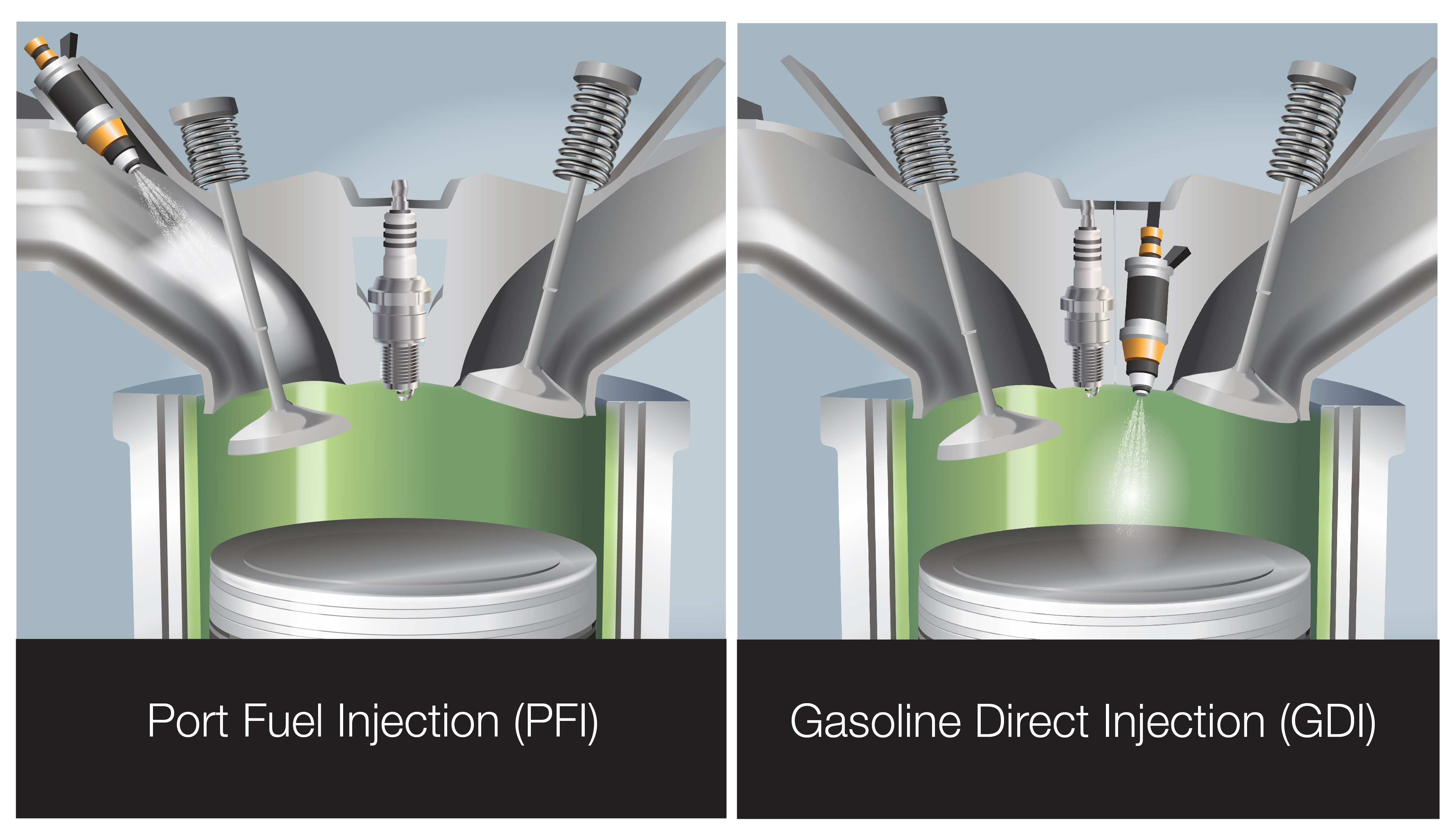How it Works - PFI vs GDI Engines
Port Fuel Injection and Gasoline Direct Injection Engines
Faced with demands for greater fuel economy, consumer engine manufacturers innovate continuously to balance efficiency with performance. Unsurprisingly, there's an intense focus on fuel injection systems to address these needs. And all that focus has led to one of the most prevalent engine hardware trends: the growing use of gasoline direct injection (GDI) technology over traditional port fuel injected (PFI) designs.

How do PFI and GDI engines work?
The primary difference between PFI and GDI gasoline engines is in their method of fuel delivery for combustion.
Direct Injection vs. Port Injection
In PFI engines, fuel injectors typically sit outside the combustion chamber, within their engine's intake manifold, where they spray fuel into intake ports, mixing with air on its way to the engine's combustion chamber.
By contrast, GDI fuel injectors are mounted to their engine's cylinder heads, delivering fuel directly into the combustion chambers, where it mixes with the intake air. In each case, the air-fuel mixtures are compressed by ascending pistons, combusting as a spark plug delivers an electrical charge.
What are the primary benefits of GDI engines?
GDI technology offers many desirable advantages for OEMs concerned with fuel efficiency. Primarily, however, smaller GDI engines can generate the same amount of power and torque as larger PFI engine, a positive for fuel economy.
What are the primary challenges with GDI technology?
While the GDI design has its benefits, there are a few drawbacks. Notably, soot produced from GDI engines contributes to potential respiratory health concerns, an issue that will force the likely adoption of gasoline particulate filters (GPFs).
Additionally, GDI engines rely on increased cylinder pressure, slower operating speeds, and hotter temperatures to generate the power to work more efficiently than PFI engines. The result?
- Greater potential for oil oxidation, creating deposits and compromising the oil's useful life
- More significant potential for fuel to mix with the lubricant, thereby increasing the potential for higher levels of acid and sludge
- Greater likelihood of increased oil consumption within the engine, leading to shorter drain intervals
However, daunting as that may sound, engine oil lubricants are increasingly better equipped to offset GDI challenges.